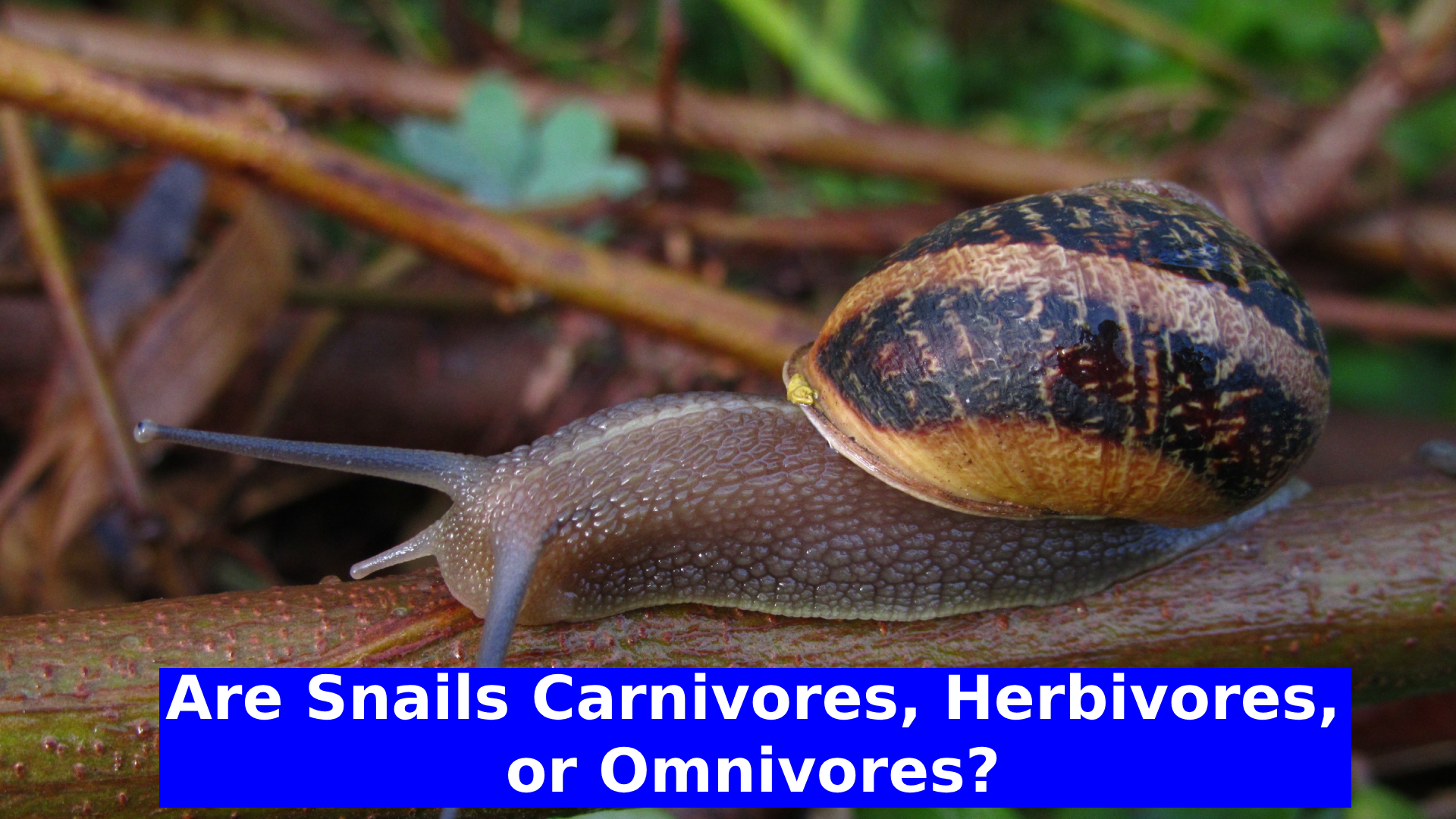Snails may be slow, but their diets are anything but boring. If you pay attention to what snails eat and how they behave, you may wonder what their diet is.
Yes, snails can be carnivores, herbivores, or omnivores, depending on the snail species and what their diet is made up of.
Let me tell you a little story. My dog killed a snake in my yard, which I was not happy about. After scolding the dog, I let the snake sit in my yard with the hope that the next morning, I would take care of it.
The next morning, when I got to the spot where I had left the snake’s body, I found that snails had eaten half of it. These are some special kinds of snails, not the usual snails you and I see every day in our yard and on our plants.
Snails have evolved to thrive in diverse environments, and their feeding habits reflect that. We must understand that nails have different species and each has its diet habits.
Depending on the species, snails can be herbivores, carnivores, omnivores, or detritivores that feed on decaying matter. This knowledge can be beneficial to those planning to go into snail farming.
Different Kinds Of Snails’ Diet
Just as we have different species of cats, Dogs and birds, we also have various kinds of snails, and just like other animals, you do not expect their diet to be the same. Here we will see a breakdown of snails’ diets and the food they avoid eating.
Herbivorous Snails
We have two primary snails: land and sea snails. The majority of our land snails fall into this category. They feast on plant-based foods, including leafy greens, fruits, vegetables, algae, and fungi. Garden snails, for instance, are known to nibble on lettuce, strawberries, and even dandelions. They are built with a kind of radula, a ribbon-like tongue with thousands of microscopic teeth, which elps them efficiently scrape and chew plant material. These snails also consume soil and bark to extract minerals like calcium, vital for shell strength.
Carnivorous Snails
Some marine snails are actual predators. Cone snails, for example, use a venomous harpoon to immobilize prey such as small fish and worms. Moon snails drill into the shells of other mollusks using a sharp proboscis, then suck out the soft tissue. These carnivorous species play a crucial role in controlling populations of other invertebrates in aquatic ecosystems.
Omnivorous Snail
A few snails enjoy the best of both worlds. Apple snails, commonly found in freshwater habitats, graze on algae and scavenge for organic debris, including dead plants and animals. Their flexible diet makes them excellent cleaners in aquariums, where they help maintain ecological balance.
Detritivores and Calcium Seekers
Their diet do not end there as some snails feed on decaying organic matter, contributing to nutrient recycling in soil and water. Regardless of their primary diet, all snails need calcium to build and maintain their shells. In captivity, they benefit from supplements like crushed eggshells, cuttlebone, and limestone. Without adequate calcium, their shells can become brittle and deformed.
Foods to Avoid
You must know that snails should not be fed salty, sugary, or processed foods. Citrus fruits, onions, and foods treated with pesticides are also harmful. These can cause dehydration, digestive issues, or even death.
Snails are incredibly adaptive eaters. It doent nessecerily matter whether they’re grazing on greens, hunting underwater, or cleaning up debris, their diets are a testament to nature’s ingenuity. Understanding what snails eat helps us care for them better and reveals their essential role in ecosystems.
Snails Can Be Carnivores, Herbivores, or Omnivores
Snails are far more complex than their slow pace suggests, especially regarding their diet. While many people assume all snails are plant-eaters, the truth is that their feeding habits vary widely across species and habitats.
Most land snails, particularly those found in gardens, are herbivores. They feed on living and decaying plant matter, including leaves, fruits, vegetables, and flowers. Their radula, a ribbon-like tongue covered in microscopic teeth, helps them scrape food from surfaces. This is why gardeners often find holes in cabbage, lettuce, and strawberries: snails are quietly feasting overnight.
However, not all snails stick to a vegetarian lifestyle. Some species are omnivores, consuming both plant and animal matter. For example, garden snails may scavenge decaying insects or worms when plant food is scarce. This adaptability allows them to survive in diverse environments.
Then there are the carnivorous snails, which are primarily found in marine ecosystems. The Atlantic moon snail, for instance, preys on clams and even other snails. These predators use acid and enzymes to bore through shells before consuming their prey alive. Another example is the Powelliphanta snail of New Zealand, a land-based carnivore that hunts earthworms.
Snail diets can be categorized as follows:
- 🏡 Garden snails: Primarily herbivores, occasionally omnivorous.
- 🌊 Marine snails: Often carnivorous or omnivorous.
- 🌿 Roman snails: Strictly herbivorous.
- 🐚 Moon snails: Carnivorous and cannibalistic.
Environmental factors also influence their diet. Snails in nutrient-poor habitats may evolve to consume a broader range of food, including animal matter. Their slow metabolism means they don’t need to eat daily, but require calcium-rich foods to maintain healthy shells.
Conclusion
Depending on their species and surroundings, snails can be herbivores, carnivores, or omnivores. Their dietary diversity makes them fascinating creatures and vital contributors to ecosystem balance, whether they recycle organic matter or control insect populations.

